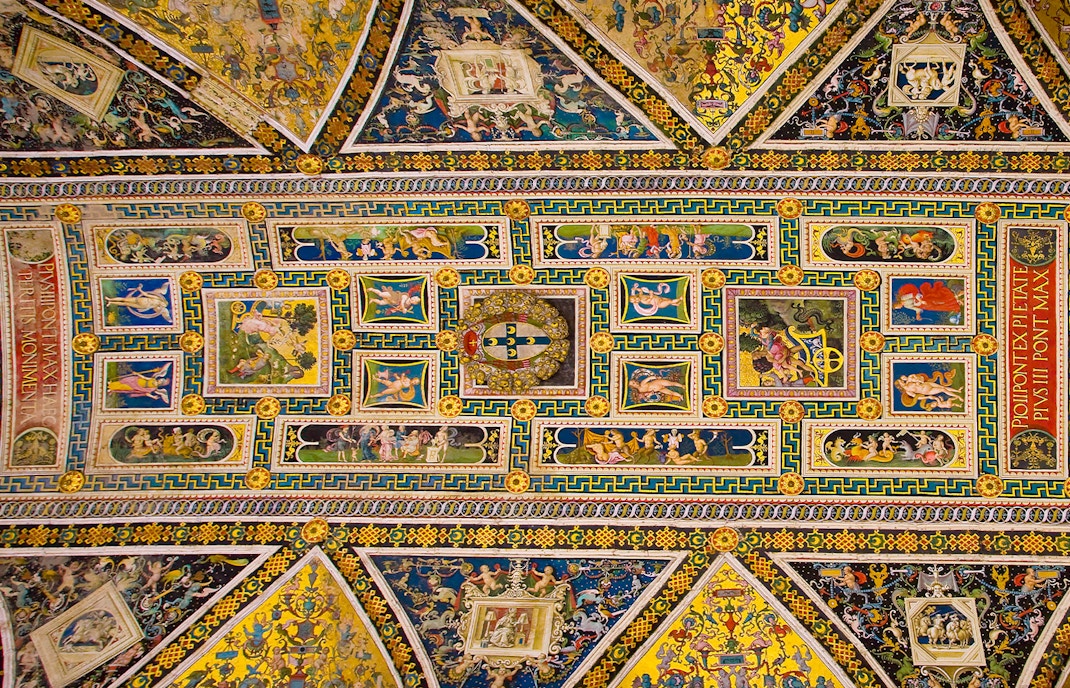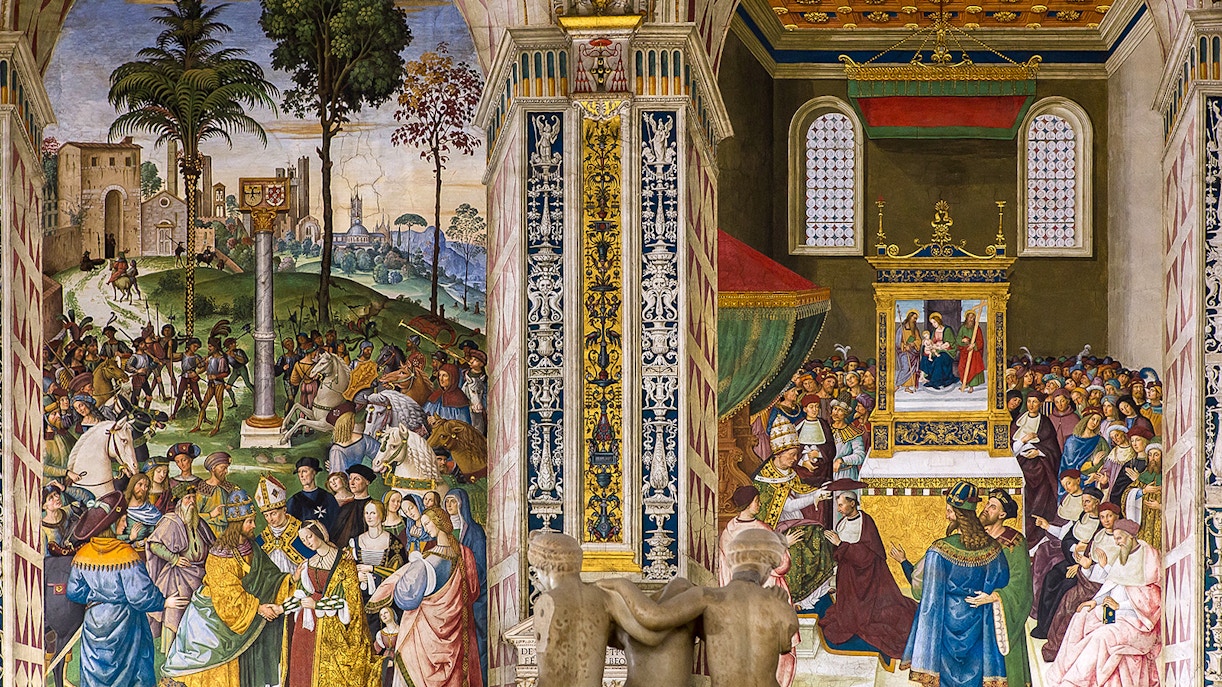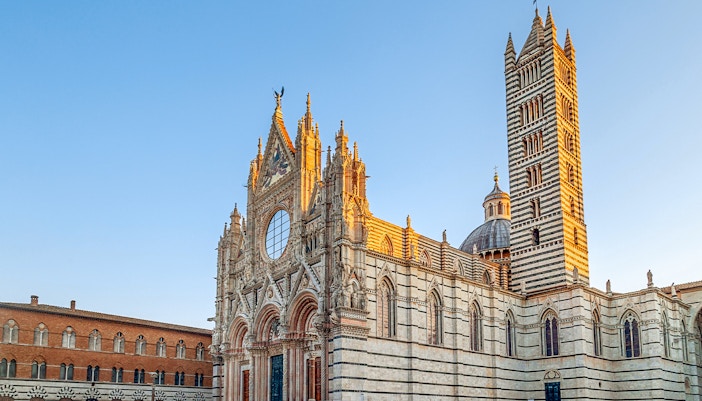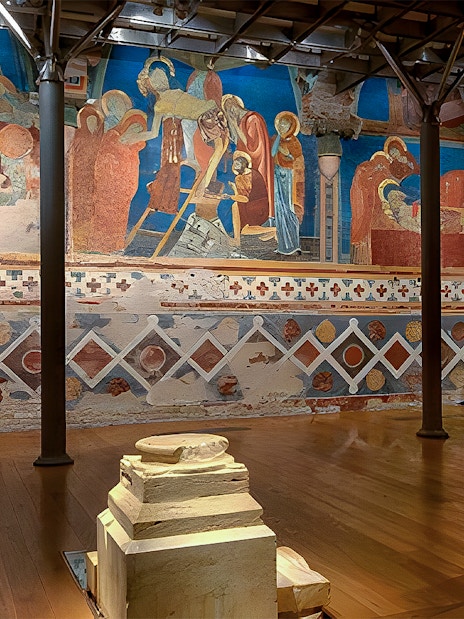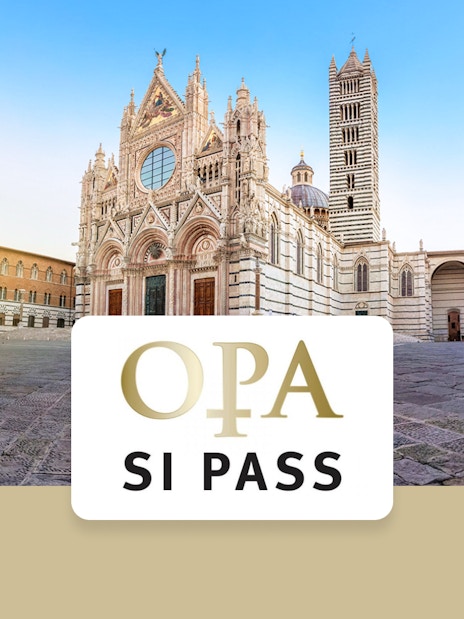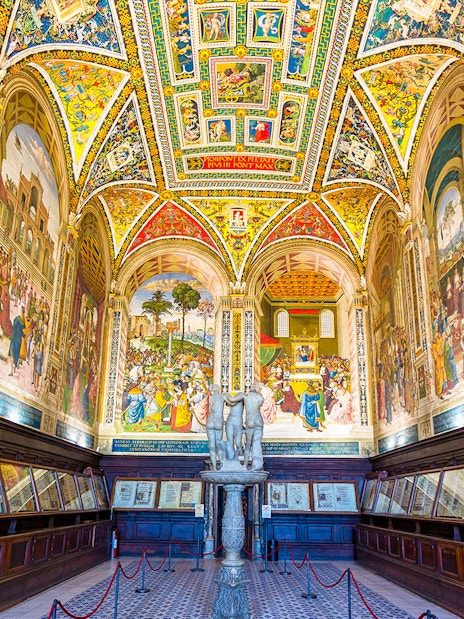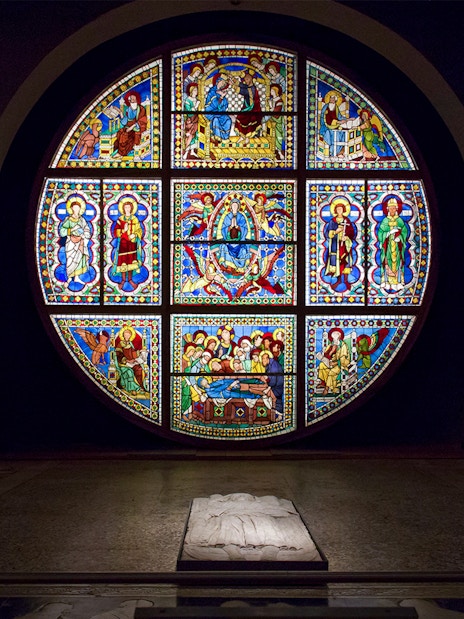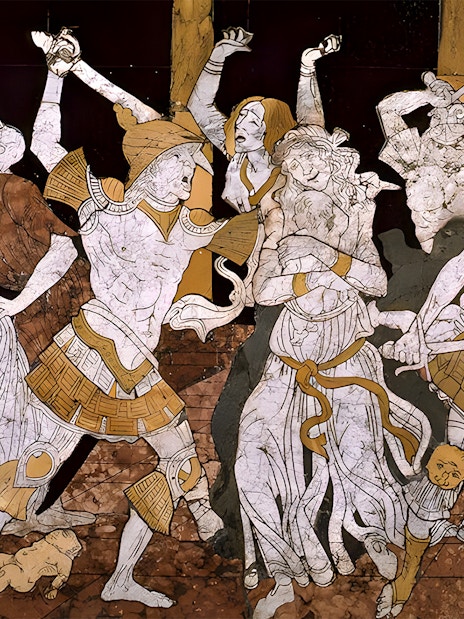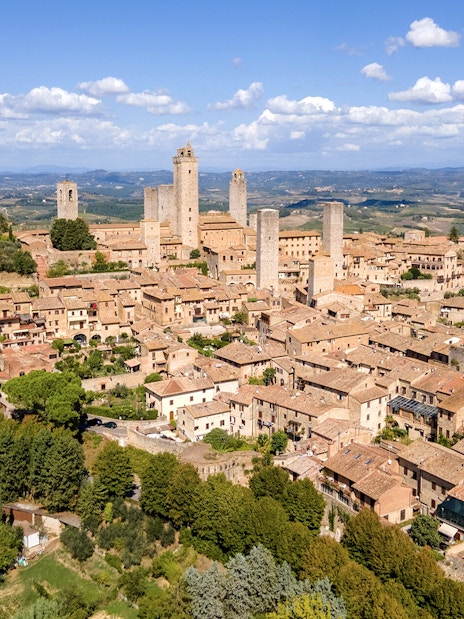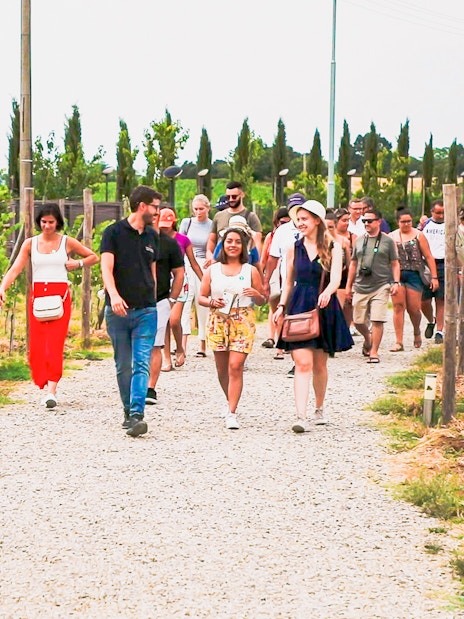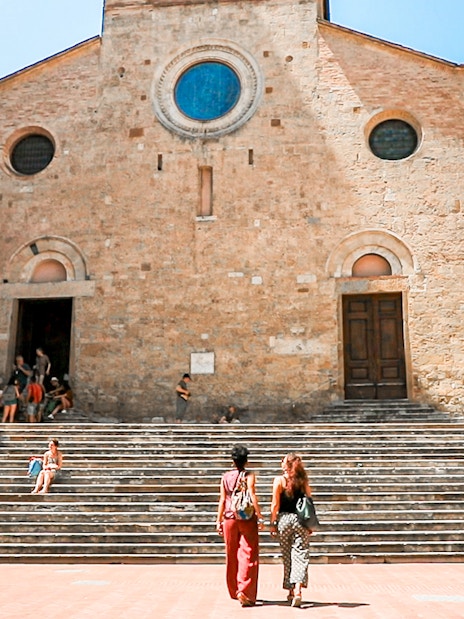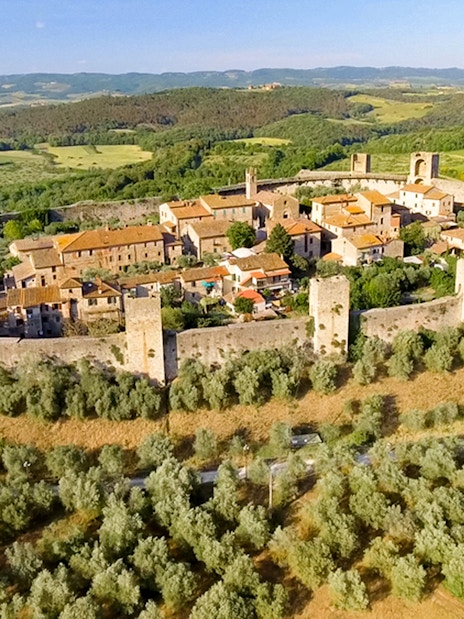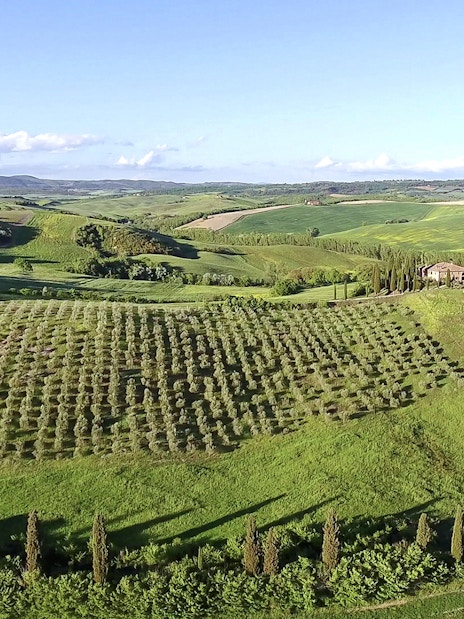Construction era: 1492 - 1502
Materials used: Marble and stone
Notable features: Ceiling frescoes by Pinturicchio, manuscripts, and codices.
Current use: Originally designed to house the manuscript collection of Pope Pius II, the Piccolomini Library now serves as a museum space displaying 15th-century literature and art.
Entrance: Included with your cathedral ticket, the Piccolomini Library is located in the left chapel of the cathedral.
Unique facts:
- The library was commissioned by Francesco Piccolomini Todeschini (later Pope Pius III) as a tribute to his uncle, Enea Silvio Piccolomini (Pope Pius II).
- Despite its name, the library's primary purpose was to showcase the life and achievements of Pope Pius II through Pinturicchio's frescoes.
- Among the library's treasures is a marble sculpture of the Three Graces, a Roman copy of a Hellenistic original.






